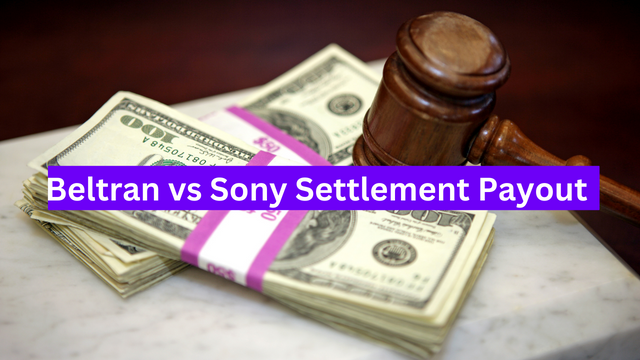The legal landscape in the tech industry often showcases significant disputes, and one of the most notable cases in recent history is the Beltran vs. Sony settlement. This case has attracted attention not just for its implications for the involved parties but also for the broader impact it may have on technology and consumer rights. This article delves into the details of the settlement, its implications, and the statistics that shed light on the case.
Background of the Case
The Beltran vs. Sony settlement stems from allegations made by Beltran against Sony regarding privacy violations and misuse of consumer data. The dispute began when Beltran claimed that Sony had improperly collected and used personal information without adequate consent. This case highlights the ongoing challenges in ensuring data privacy in an increasingly digital world.
Key Allegations
Beltran’s allegations revolved around two main issues:
- Data Misuse: It was claimed that Sony collected user data beyond what was necessary for service delivery.
- Lack of Transparency: Beltran argued that Sony failed to provide clear information regarding their data collection practices, leaving consumers unaware of how their data was being used.
These issues are pivotal in the context of rising consumer awareness about privacy rights and data protection.

The Settlement Agreement
The Beltran vs. Sony settlement ultimately resulted in a series of changes in how Sony handles user data. Key components of the settlement included:
- Financial Compensation: Sony agreed to pay $5 million in damages to affected users, a significant sum that reflects the seriousness of the allegations.
- Policy Changes: Sony committed to enhancing their privacy policies and improving transparency regarding data collection practices. This includes clearer language in user agreements and more robust user consent protocols.
- Monitoring: An independent auditor will review Sony’s data practices for the next five years to ensure compliance with the new policies.
These measures are aimed at restoring consumer trust and ensuring that such violations do not occur in the future.
Statistical Insights
To understand the broader implications of the Beltran vs. Sony settlement, it’s essential to examine some statistics related to data privacy:
- According to a 2022 survey by the Pew Research Center, 79% of Americans expressed concerns about how their data is being used by companies.
- The Identity Theft Resource Center reported that in 2021, 1,862 data breaches exposed over 298 million records, emphasizing the growing issue of data security and privacy.
- A study by the International Association of Privacy Professionals found that 62% of organizations reported having experienced a data breach, reinforcing the necessity for robust privacy policies.
These statistics not only underline the relevance of the Beltran vs. Sony settlement but also highlight the broader context of consumer rights and data protection in the technology industry.

Implications for Consumers and Companies
The implications of the Beltran vs. Sony settlement extend beyond the immediate financial reparations and policy changes. Here’s how the settlement affects both consumers and companies:
For Consumers
- Enhanced Privacy Rights: The settlement underscores the importance of consumer privacy rights, setting a precedent for future cases. Consumers may feel more empowered to challenge companies that do not uphold data protection standards.
- Increased Awareness: As consumers become more informed about their rights, companies will need to be more transparent in their data practices, which can lead to better protection of consumer information.
For Companies
- Revised Practices: Companies will need to review and possibly overhaul their data collection and privacy practices to avoid similar legal challenges.
- Financial Implications: Settlements like this one can lead to significant financial consequences, influencing how companies budget for compliance and legal risks.

Conclusion
The Beltran vs. Sony settlement is a landmark case that underscores the growing importance of data privacy in the digital age. As technology continues to evolve, the demand for stringent data protection measures will only increase. This case serves as a reminder for both consumers and companies about the critical nature of data privacy and the potential ramifications of violations.
As we navigate this evolving landscape, one must consider: will more companies follow Sony’s lead in prioritizing consumer privacy, or will legal challenges continue to arise?










